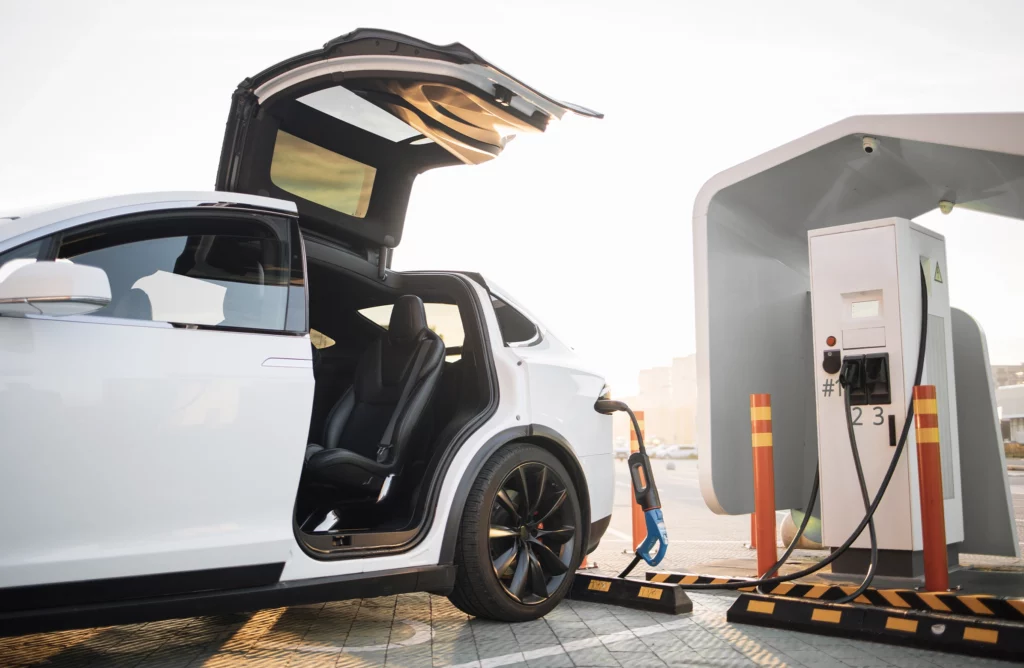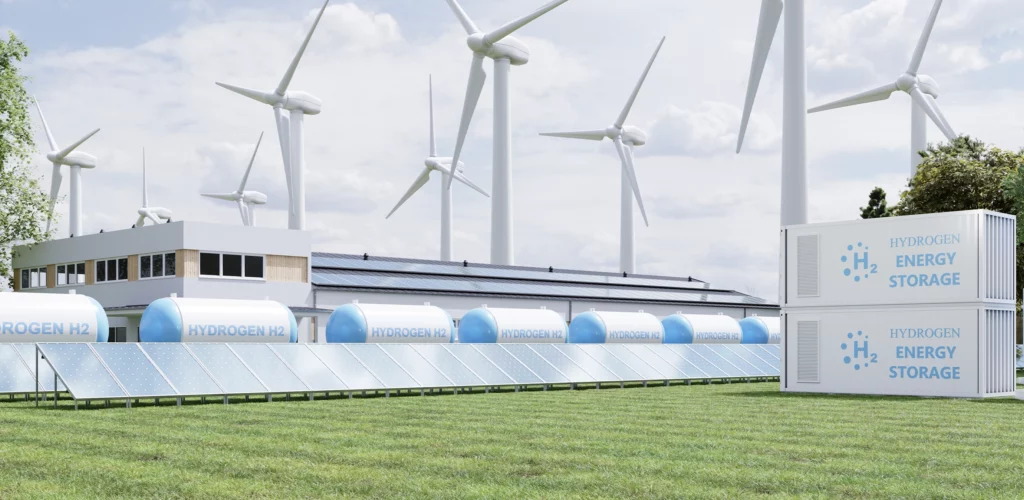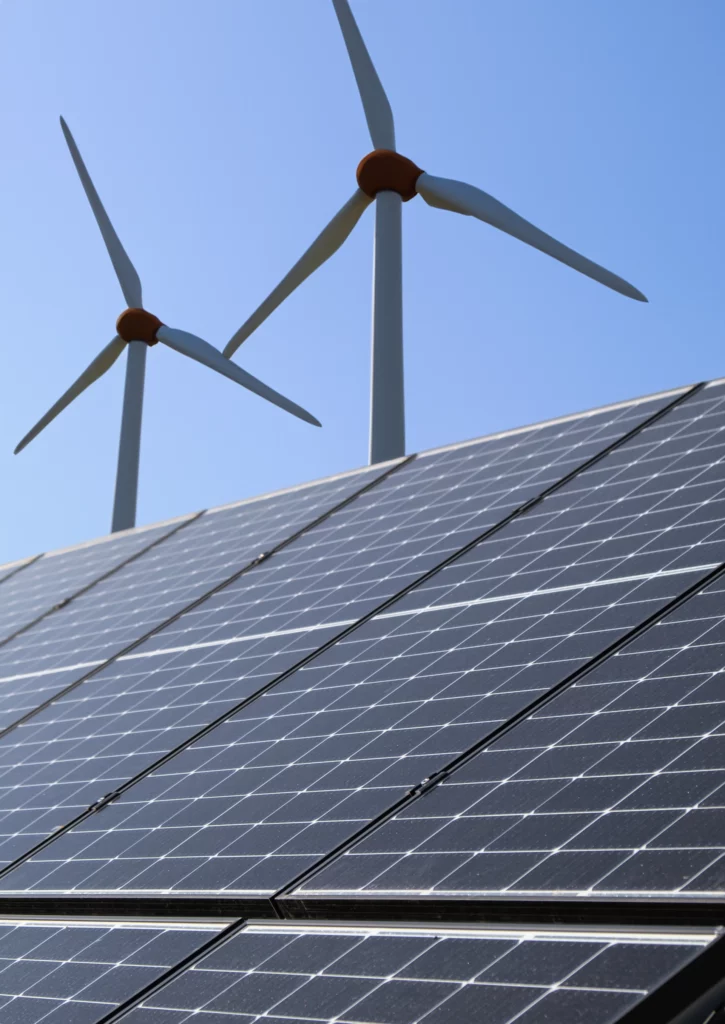Learn how TPC’s manufacturing facilities contribute to a sustainable future that’s good for us all.
The production and use of sustainable power is one of the most exciting and important changes to the energy industry in generations. More and more companies are investing in technology and infrastructure to meet customer demand while looking for ways to improve renewable energy creation, delivery, and storage.
The Partner Companies is working hand-in-hand with industry leaders producing renewable energy solutions. TPC’s platform of specialty manufacturers, most notably Photofabrication Engineering, Inc. (PEI), Elcon Precision, and L&T Precision, is teaming up with leading renewable energy companies to improve the industry’s generation, distribution, and storage solutions.
TPC’s operating companies are developing solutions for wind and solar projects, including L&T Precision’s work to build storage centers that are safe and efficient with leading solar energy companies.
At the same time, one of the most significant initiatives is supporting companies developing and producing hydrogen energy.
PEI is working with a leading global power and technology company focused on delivering robust, green hydrogen generation solutions. Elcon is partnering with another group to develop components for hydrogen fuel-powered commercial vehicles, which provide efficient and zero-emission power transportation solutions.
TPC supports its operating companies’ research and development activities and invests in machinery and technology to help further innovation to solve big challenges.

Innovation in Design & Manufacturing
PEI and Elcon are leading suppliers of titanium bipolar electrolyzer plates used in hydrogen energy plants. Engineers at both companies are partnering with customers to enhance electrolyzer plate design to increase the part’s efficiency further.
Titanium’s strength and durability make it an excellent metal for producing bipolar plates (BPP). However, manufacturers need to handle the material carefully during the fabrication, and only a handful of U.S.-based manufacturers can safely machine and process titanium.
“We’ve been working with titanium for years and understand the safety precautions that need to take place while photochemical etching and cutting this material,” reports PEI General Manager Michael Duffy. “We’ve developed robust titanium machining processes that keep our team and the environment safe.”
Ed Tomasek, Director of New Business Development at Elcon, photochemical etching is one of the most precise ways of manufacturing bipolar electrolyzer plates. (Elcon’s primer on photochemical etching is a must-read for those unfamiliar with the process.)
“Our digital printer (used to create the etched pattern on the metal surface) enables us to draw fine lines on both sides of the plate,” he says. “Bipolar plates have channels on both sides, so front to back precision is critical to meet the flow characteristics of the plates. Not many places have the technology we have here at Elcon and PEI to do that properly.”
PEI is focused on manufacturing bipolar plates from titanium, while Elcon is developing aluminum, stainless steel, and titanium products.
Elcon and PEI also manufacture anodes and cathodes used in fuel cells, which takes a careful eye during engineering, manufacturing, and quality assurance processes.
“We see a huge opportunity with solid state and lithium-ion batteries,” Tomasek says, “and we’ve been collaborating with a local company doing great work in this space. We’re excited to see where that goes.”
L&T Precision has long-term relationships with companies developing renewable energy storage technologies. Known for its expert sheet metal fabrication, assembly, and finishing capabilities, L&T’s team manufactersthe enclosures for converter boxes installed in residential homes for solar energy power storage.
“The companies we work for are looking for greater storage efficiencies,” says L&T Director of New Business Development Erin Renning, “and for better solutions for electric vehicle charging stations. We support our customers by serving as the contract manufacturer of their unique designs while building to their particular specifications.”

Growing to Meet Demand
PEI and L&T are expanding their footprint and workforce to meet the growing demand for products from their renewable energy partners.
“We are layering in automation and advanced process controls during the manufacturing process in addition to expanding shifts in our plant,” says PEI’s Duffy. “The volume of what we’re producing has more than tripled in recent years, and we’re meeting that challenge with gained efficiencies and additional staffing. We’re adding more photochemical titanium etching machines and chemical processing infrastructure to handle the extra work while always putting safety first.”
L&T is opening a new manufacturing facility inMexico this year for customers seeking a high-volume, cost-effective fabrication solution.
“Plus, we are looking for ways to add as much value as possible for our customers,” says Renning, “by performing assembly services. By simplifying their supply chain, our customers can get the enclosures into the field as quickly as possible.”
Other TPC sister companies leverage their expertise and manufacturing facilities to contribute to the cause.

Exciting Opportunities For Growth
As reported last fall, statistics released by the International Renewable Energy Agency (IRENA) reveal that renewables made up 81 percent of new electricity capacity in 2021, up from 79 percent a year earlier, with renewables increasing to more than 38 percent of the total capacity of all the infrastructure.
More recently, the International Energy Agency (IEA) said that renewable capacity will meet 35% of global power generation by 2025, with global investment in clean energy set to reach $1.7 trillion this year. For the first time, solar energy will exceed oil production. IEA expects renewables to account for 90% of global electricity capacity expansion through 2027. Further, the Energy Information Administration (EIA) predicts that solar power will make up more than half of the new capacity in the US in 2023.
Green Hydrogen will also play a growing part in the future of renewable energy. Produced by electrolyzers that separate hydrogen and oxygen from water, hydrogen can be directly injected into gas grids, used in fuel and chemicals production, and used in hydrogen fuel cell applications for airplanes, buses, and trucks. It is easy to store, can be stored long-term, offers reliable mobility, and is a great way to transport power, especially to areas with limited or no access to renewable energy sources.
Dedicated To The Power Of Green
The Partner Companies continues to look for ways to expand its reach into renewable energy and to be on the front lines of innovation, job creation, and sustainability.
“Our mission and values center around people. Alternative energy benefits the entire human race, so we want to be part of that business to bring our mission to life,” says Renning.
Reach out if you would like to discuss how TPC can support your efforts for a green future.

